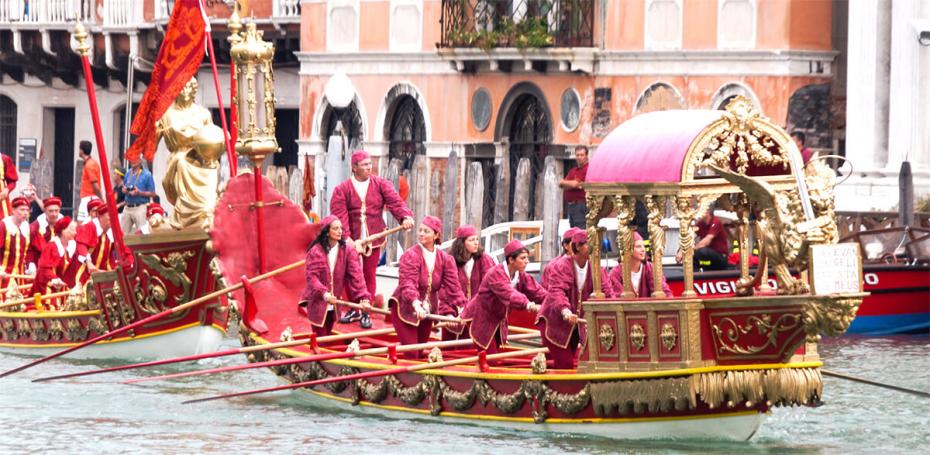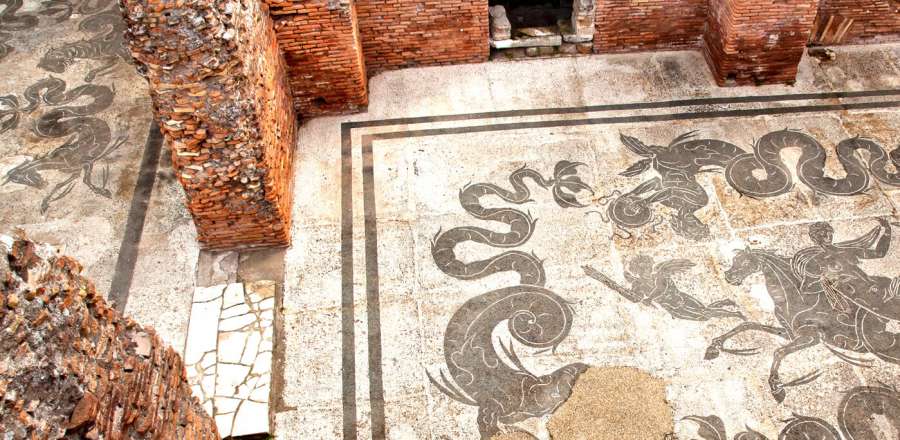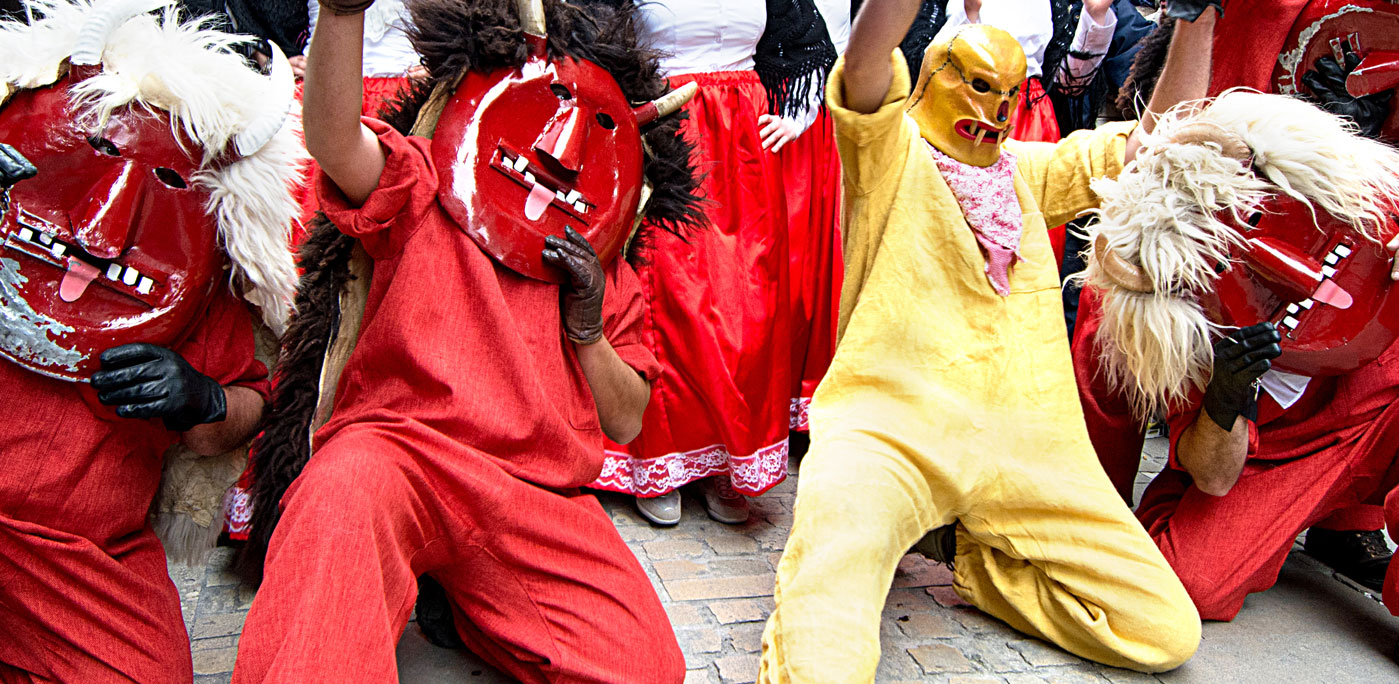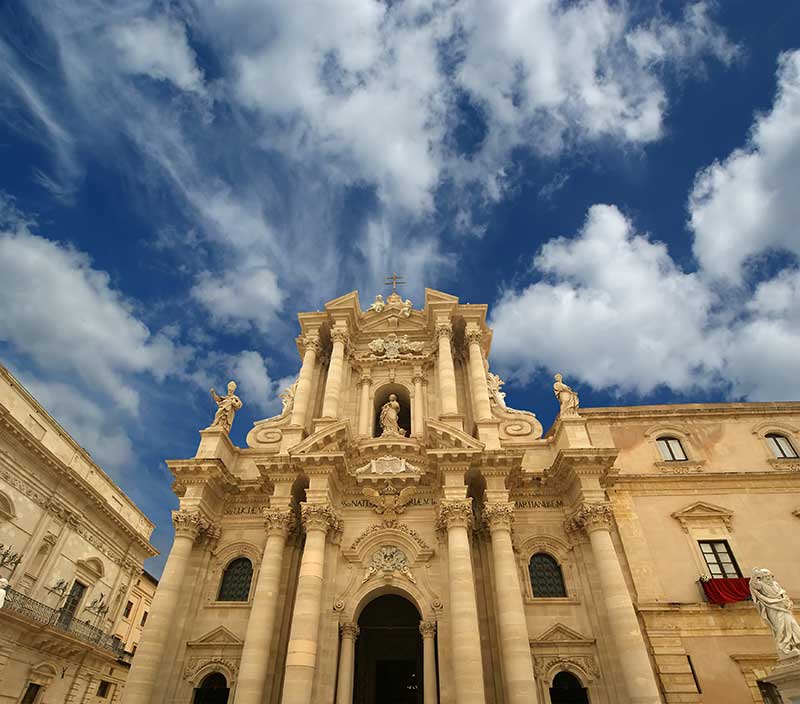Regattas have been popular in Venice since at least the 13th century when the first one was documented. And the water races probably date back much further as Venice has always, by virtue of its location, been a spectacularly successful seafaring nation. So as the Doge’s golden state barge, or Bucintoro, takes pride of place at the head of this weekend’s Regata Storica here are 4 fascinating reasons why you shouldn’t miss the parade along the iconic Canal Grande.
1. Witness living Venetian history
A slow, steady drumbeat heralds the beginning of Venice’s Regata Storica, literally translated as historic regatta, as a flotilla of ornate ceremonial boats and barges glides slowly and purposefully up the iconic Grand Canal. It’s a spectacular sight headed by the glistening, gilded grand Bucintoro barge of the Doge, or president, of the old Venetian republic. But this isn’t a mere theatrical tourist spectacle for the millions of visitors that flock to Venice each year. This is a piece of glorious Venetian history dating back over 500 years to 1489 and is an important date in the Venetian calendar not to be missed.
The Bucintoro makes an impressive entrance, propelled by 18 costumed rowers, as the late afternoon sun glints off its opulent gold leaf decorations. It is the state barge of the Doge and was used on all ceremonial occasions. But whilst today’s Bucintoro was built from old plans in 2008 costing a whopping €20 million it’s not even half the size of the most magnificent one. Built in 1729 under the reign of Doge Alvise III Sebastiano Mocenigo, and often seen in the glorious visions of Venice by Canaletto, the largest Bucintoro was an enormous 115 feet long, 26 feet high, required 168 oarsmen and 40 sailors to sail it and could carry an additional 90 guests. Sadly that one was destroyed by Napoleon in 1798 to symbolise his dominance and victory over the conquered city but it must have been quite an awe-inspiring sight as it sailed from St Mark’s to meet visiting dignitaries and royal guests.
And it’s exactly one such official greeting that the Regata Storica commemorates as it originally welcomed the arrival of Caterina Cornaro. Originally born in Venice, Caterina was the last Queen of Cyprus but renounced her throne in 1489 after the death of her husband James II. Given that she then gave the strategically placed island of Cyprus over to the Venetian Republic to rule, its unsurprising that the Doge and all his dignitaries rolled out the proverbial red carpet with a sumptuous water parade of ornate 15th century boats. Venice was, after all, the most powerful maritime state at the time, controlling large swathes of the Adriatic and Mediterranean trade routes and territory so the addition of Cyprus was certainly something to celebrate. And today the occasion is recreated every year with the Regata Storica parade of beautiful historic boats carrying Venice’s officials and dignitaries in the finest 15th century costumes.
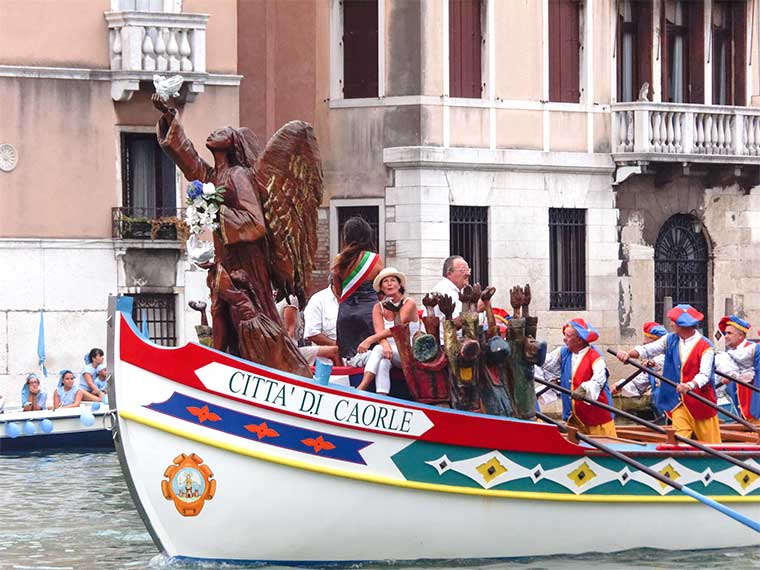
2. Watch Venice’s gondoliers race against each other
Regattas using Venice’s unique standing rowing technique have been an intrinsic part of Venetian life for centuries. Originally used as part of the training of the hundreds of oarsmen needed to crew the galleons built in Venice’s Arsenale shipyard, the first recorded regatta dates back to the 1200s although we can safely assume that they were happening long before that too.
As the years progressed regattas became an essential part of ceremonial life too and today Venice’s regattas are a mix of historic ceremony, religion, tradition and racing. And the Regata Storica is no different, having two quite different parts in the afternoon. The first is the historic pageant or parade of state boats and officials that starts at 4pm. And the second is a series of serious, athletic boat races along the Grand Canal that kick off from 5pm as the heat of the day is gently subsiding.
Men, women and children all have races. From the twin-oared regattas for children rowing traditional wooden maciarele or pupparini boats, to the women’s twin-oared race in mascarete boats, to the impressive six-man races in the typical flat caorline boats, each regata is an opportunity to display strength, speed and technique.
But the race that everyone is waiting for is the final one when the city’s best gondoliers fight it out, showing off their famed rowing skills in a thrilling 2 man gondola race from St Mark’s Basin up the Grand Canal. Instead of racing in their normal black gondolas, they compete in 8 rainbow coloured boats, especially built for sleekness, speed and racing. It makes for a wonderfully colourful and uniquely Venetian spectacle although this year some of the boats have been callously vandalised so it’s a race against time to make sure that they are in top condition for the day.
Down through the years one gondolier – Giampaolo D’Este – has dominated, winning the last 11 years with his partner. But this year “Super D’Este”, as he’s known locally, has announced that he is retiring so the race has been blown wide open. It promises to be a thrilling finale to the day’s racing as the city watches who can fill D’Este’s impressive place to claim the red winner’s pennant that every Venetian rower craves.
3. Venetians have their own unique rowing style
Venetian rowing is not like other rowing. Most techniques consist of sitting in a boat and paddling, sculling or propelling the vessel forward using the arms, legs or back for strength. In Venice, however, there are a number of factors that make ordinary rowing impossible.
Firstly the canals are too narrow to allow long oars to extend far out from the boat. Secondly, out in the lagoon there are sandbanks and shallow, submerged obstacles that the rower needs to see and avoid. And finally, the twisting, turning, tight canals of Venice make manoeuvrability an essential requirement of any boat and rower to enable them to navigate the labyrinthine maze without damage either to the boat, themselves or the ancient buildings.
The solution is a shallow, flat-bottomed boat, typically a gondola or caorline, rowed from a standing position. Venetians discovered that standing not only allows an elevated view of submerged obstacles in the water but also is extremely efficient as one gondolier can transport 3 passengers using little more energy than walking. Add in the long, flat oar used down beside the boat as the propeller, rudder and brake and you have the perfect balance of beauty, power and navigation.
4. And it’s free to watch!
The Regata Storica begins in St Mark’s Basin in front of the Doge’s Palace before entering the Grand Canal and gliding gently up towards Ca’ Foscari and the Rialto. The regatta races follow the same route too so it’s easy for the Venetian and visitor alike to find a vantage point along the way. And whether you cheer from the Dogana customs house at La Salute, from atop the wooden Accademia Bridge or from a balloon-festooned boat moored up along the canal it’s all fabulously free! What better way to pass a sultry, summer Sunday afternoon than watching history being re-enacted and racing history being made. Perfetto!
